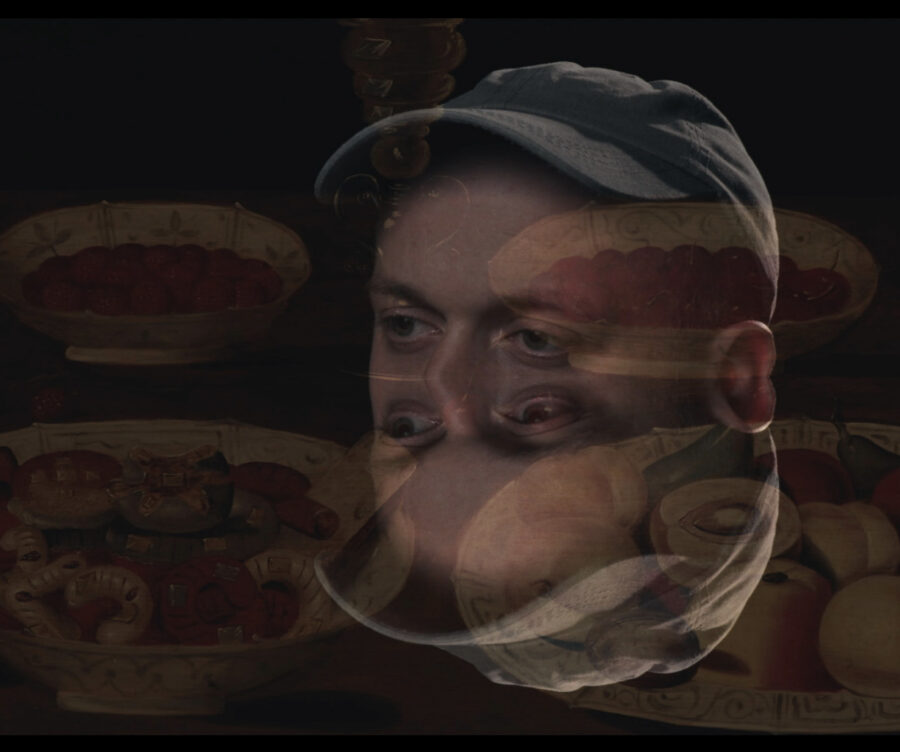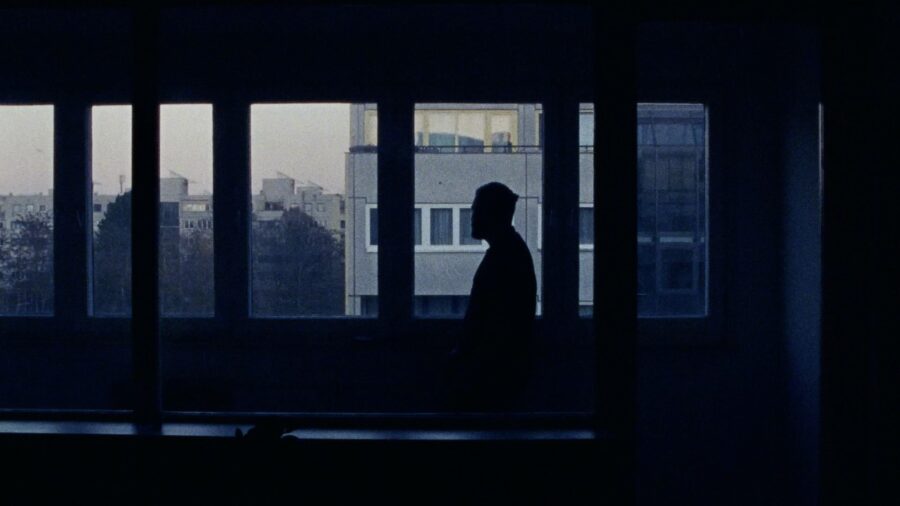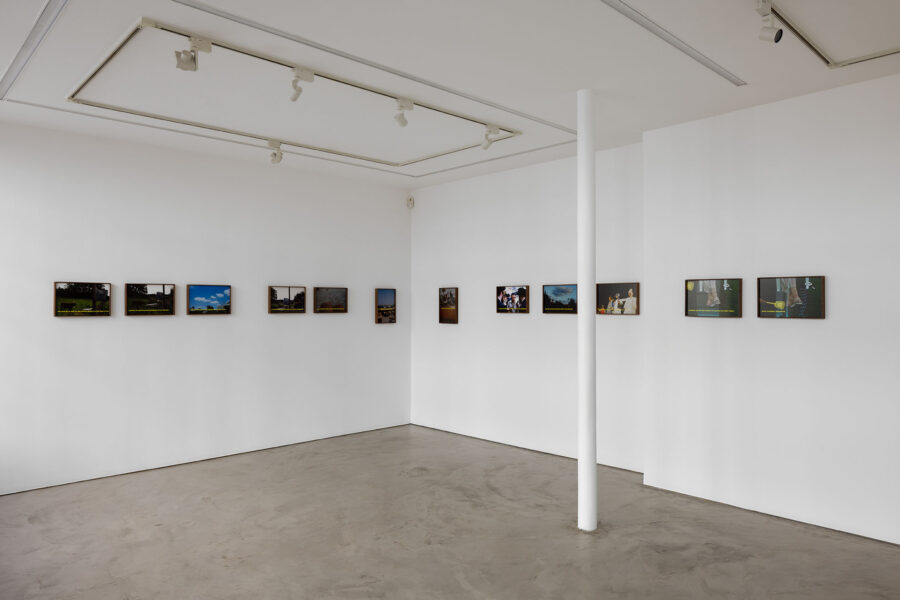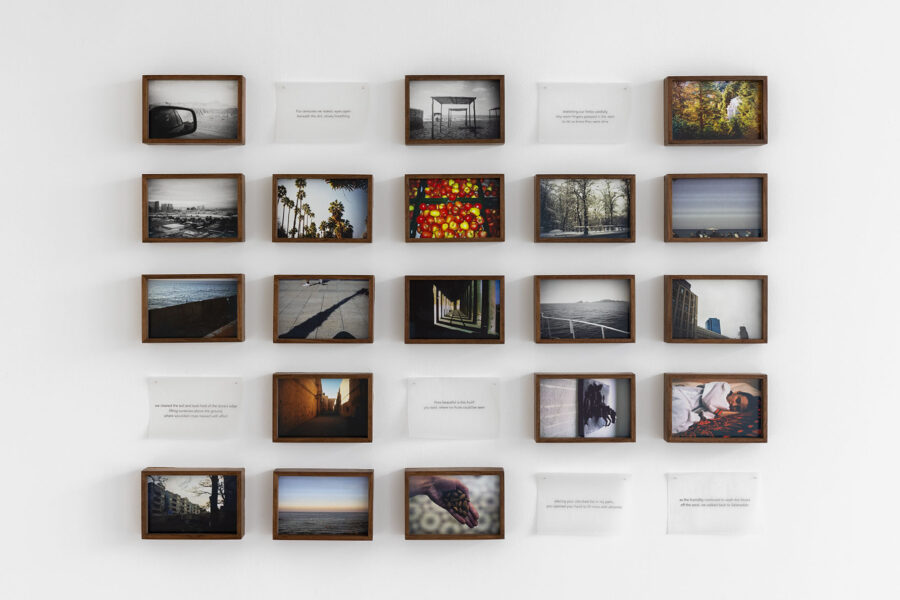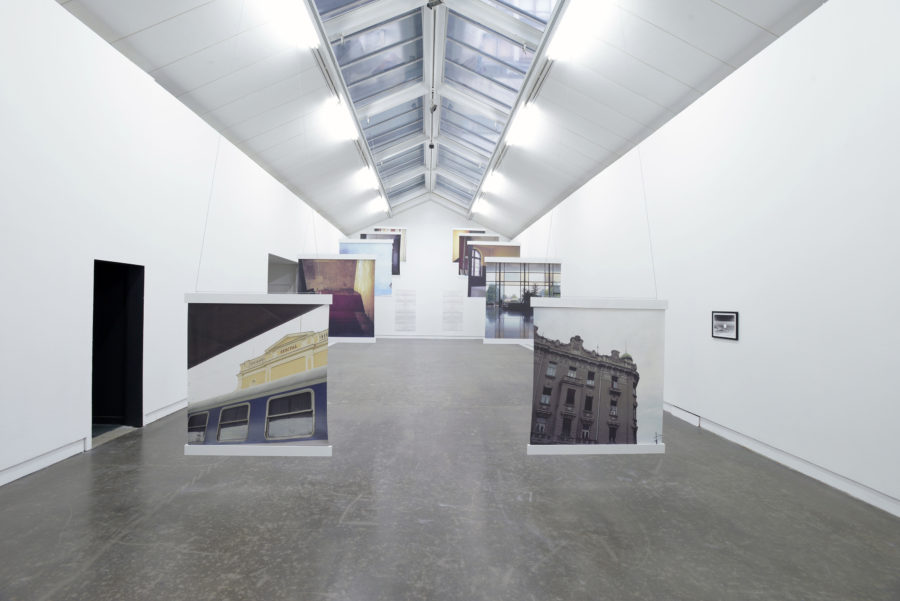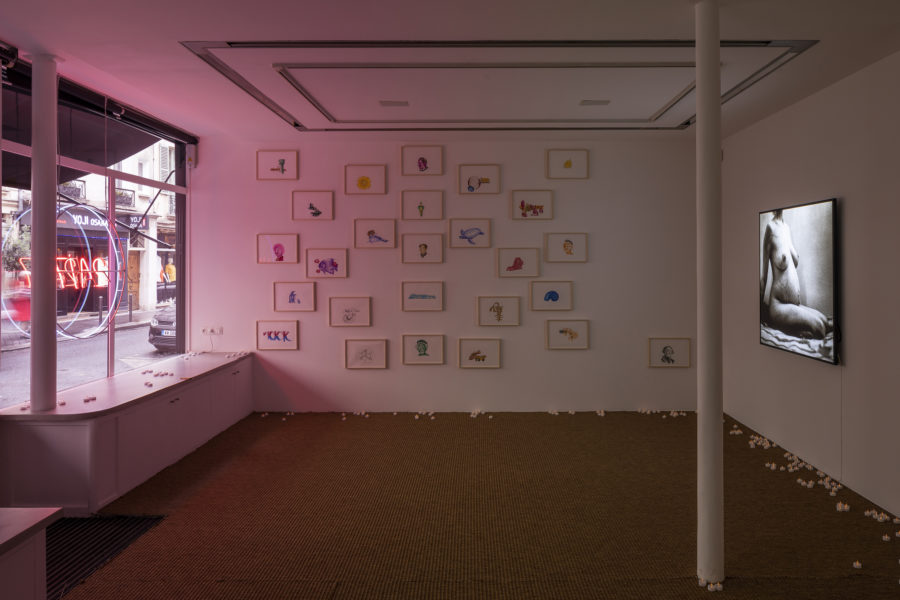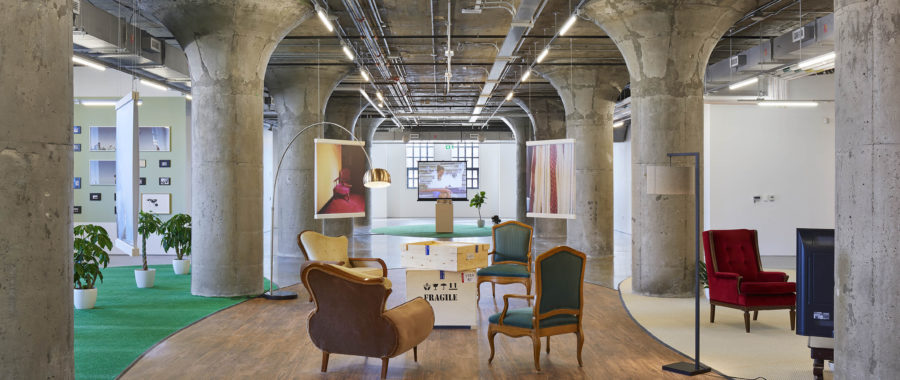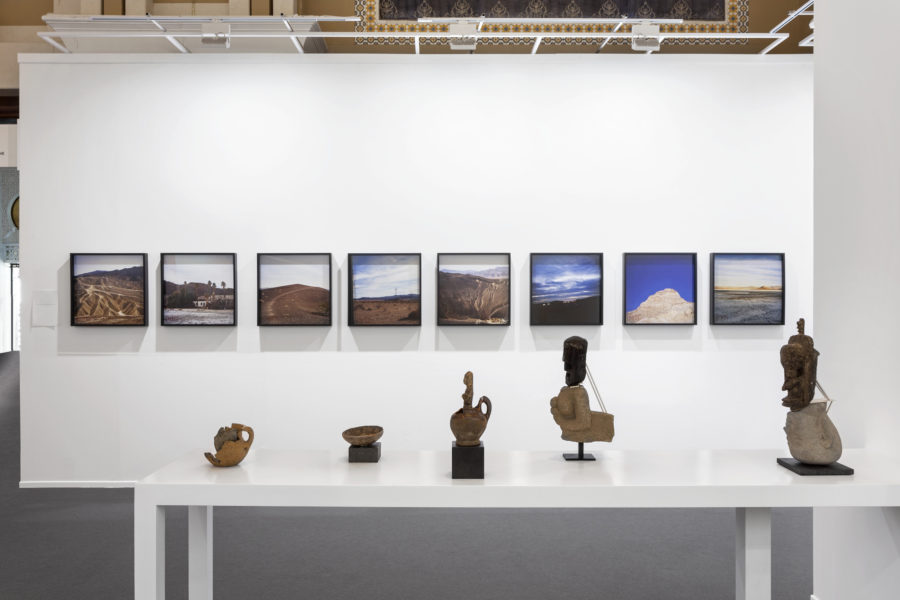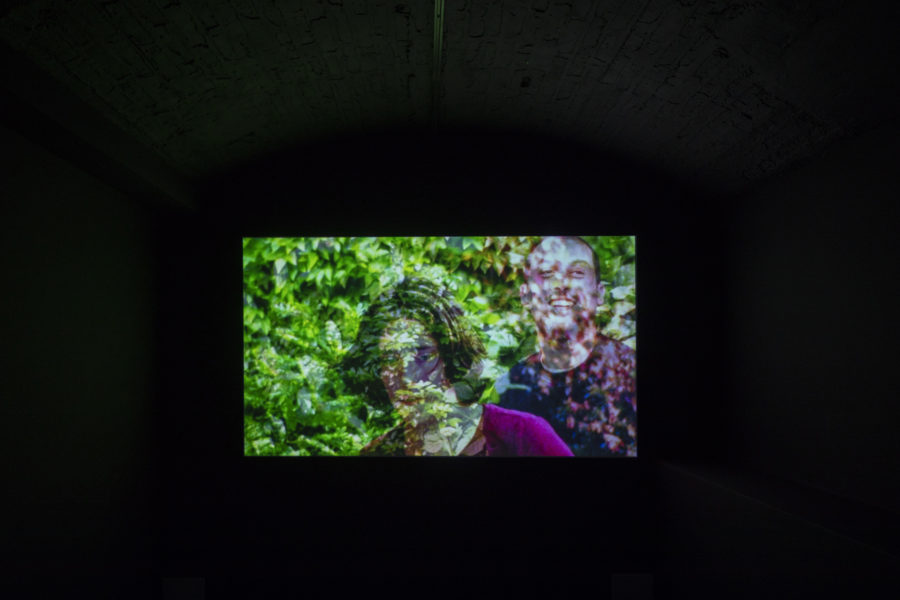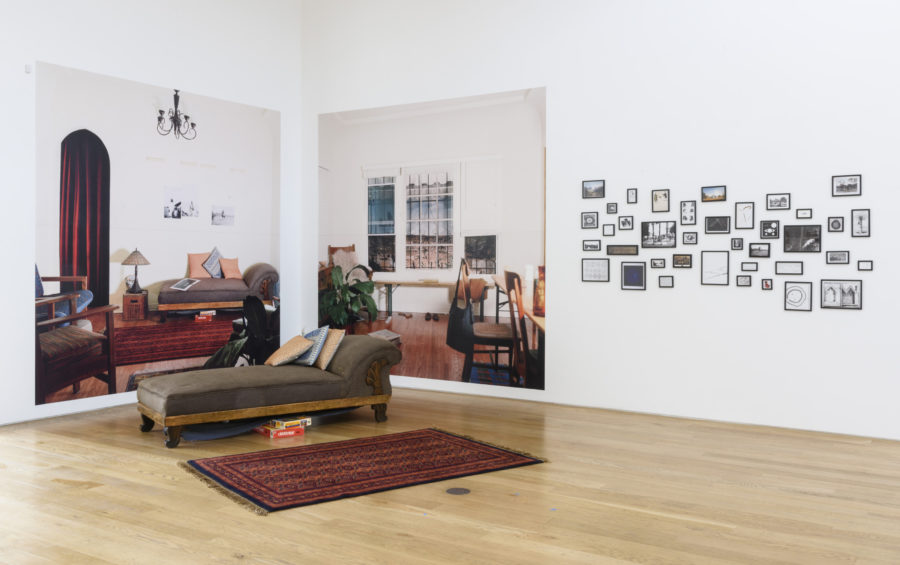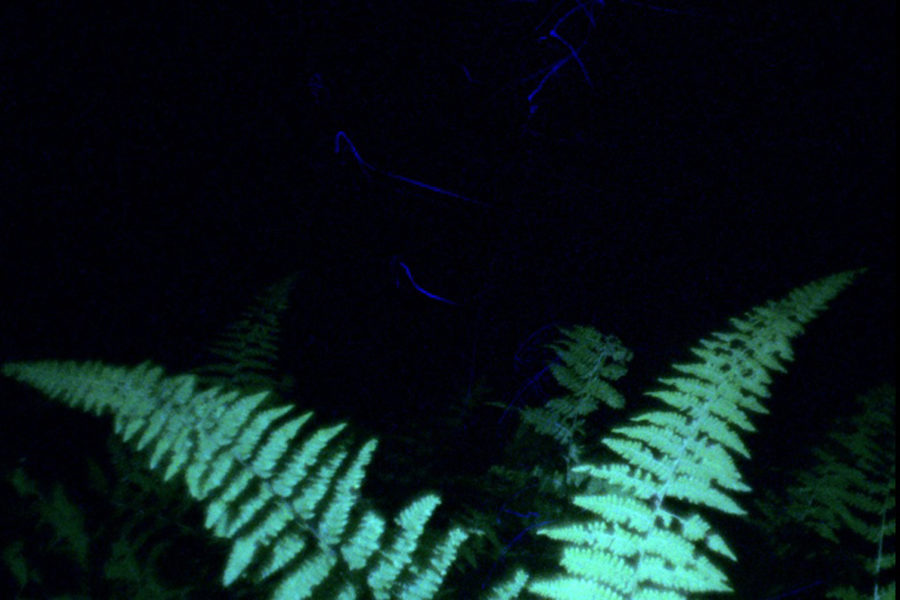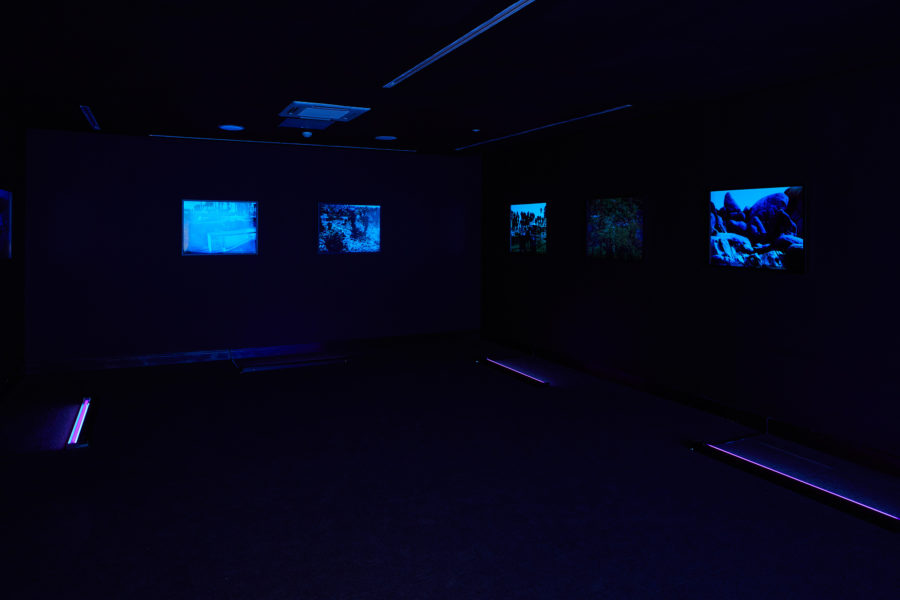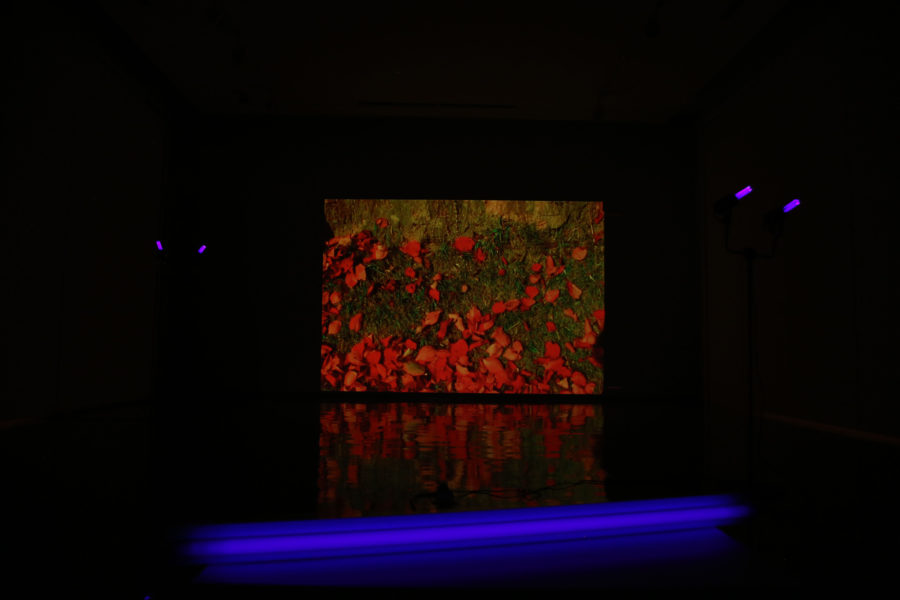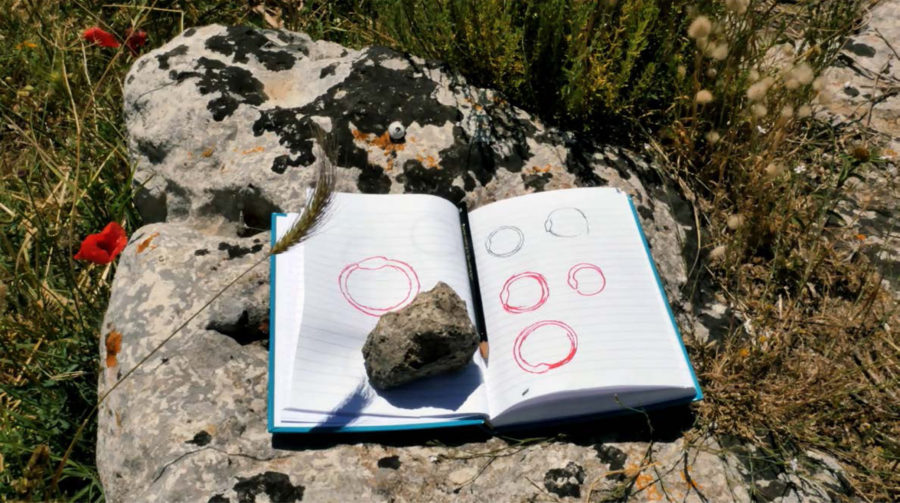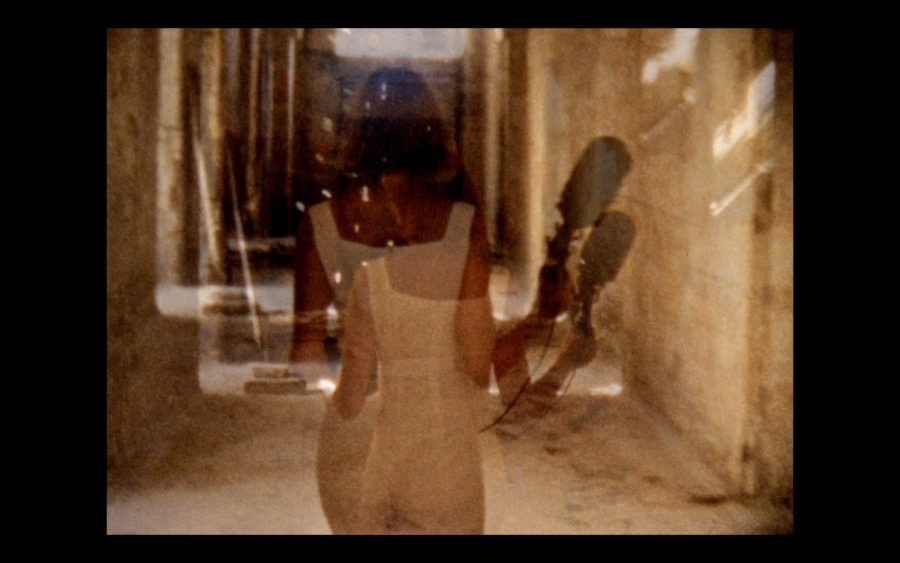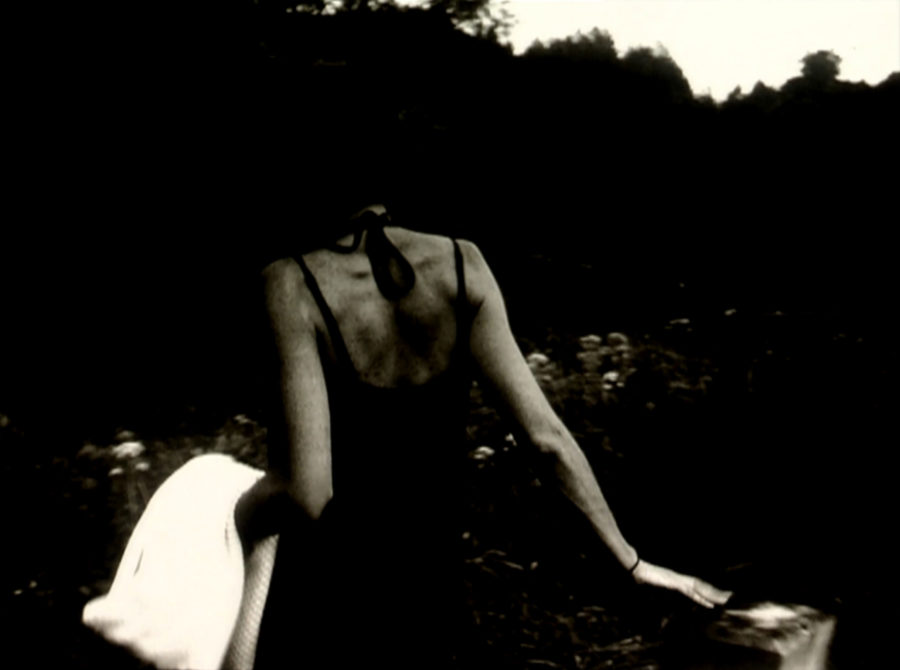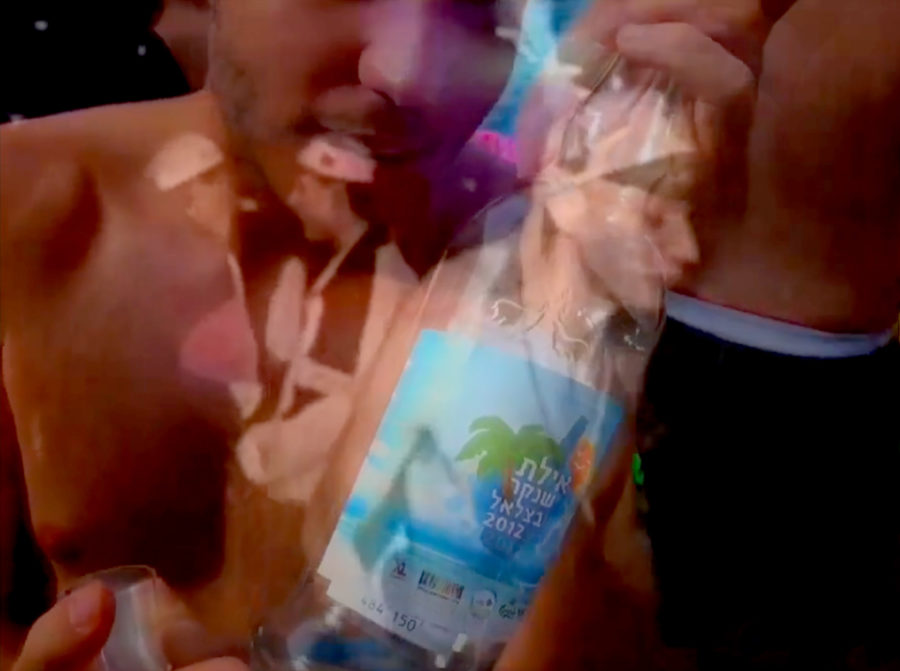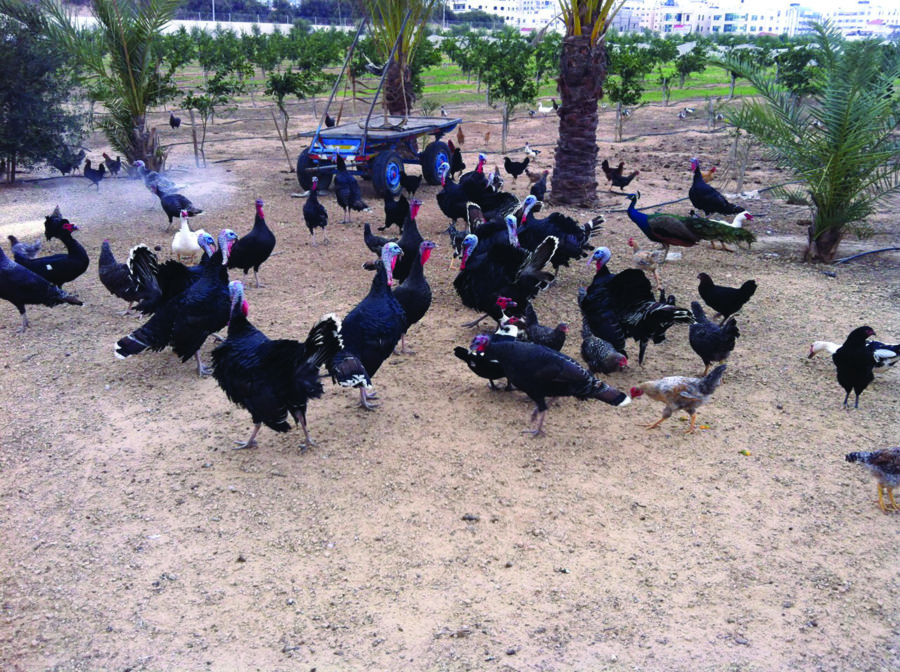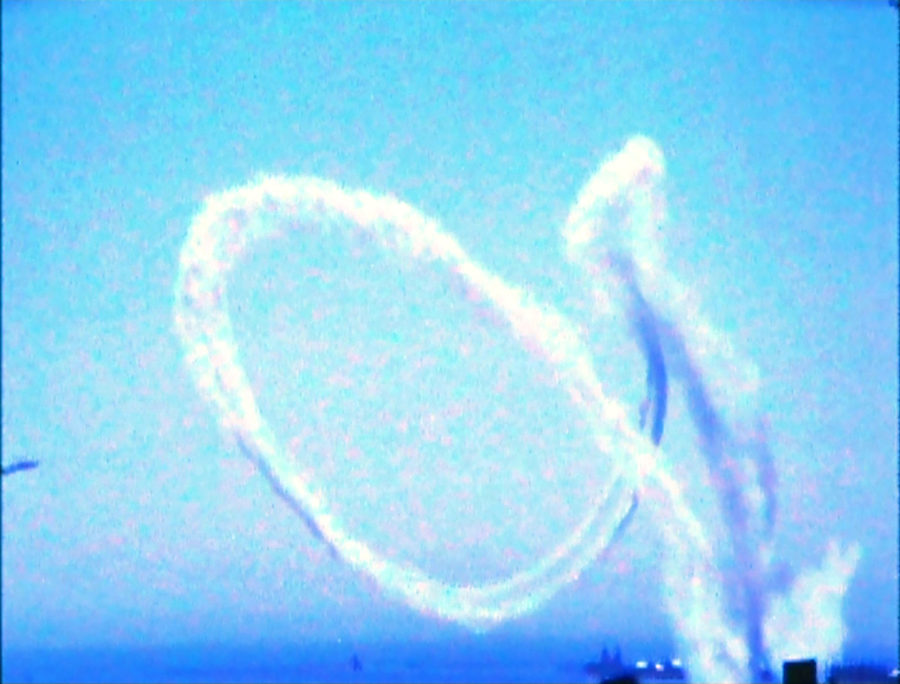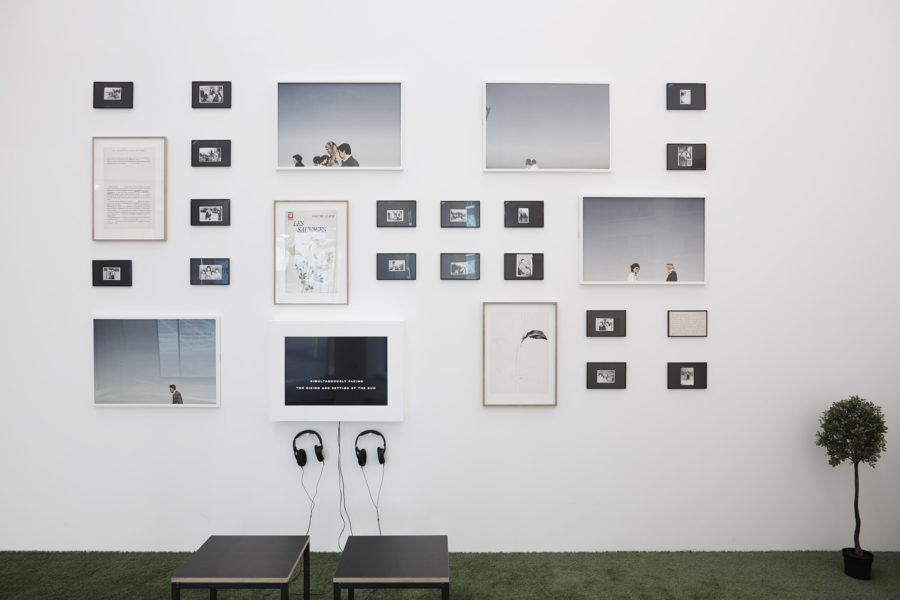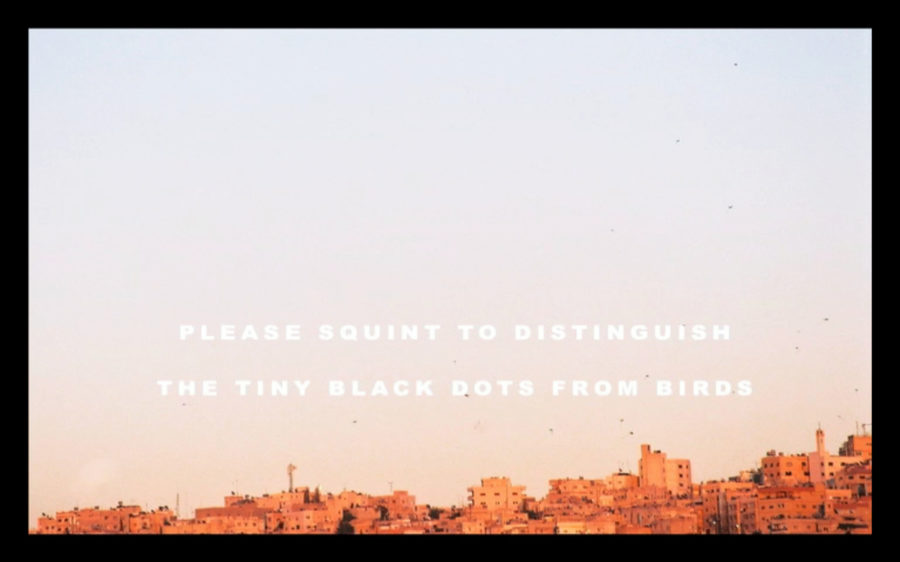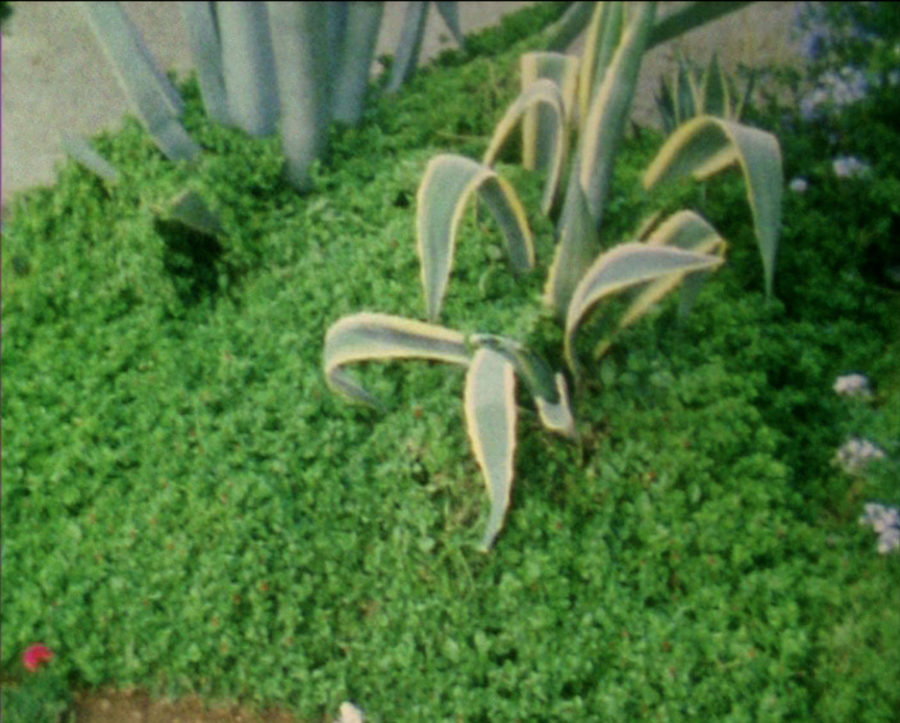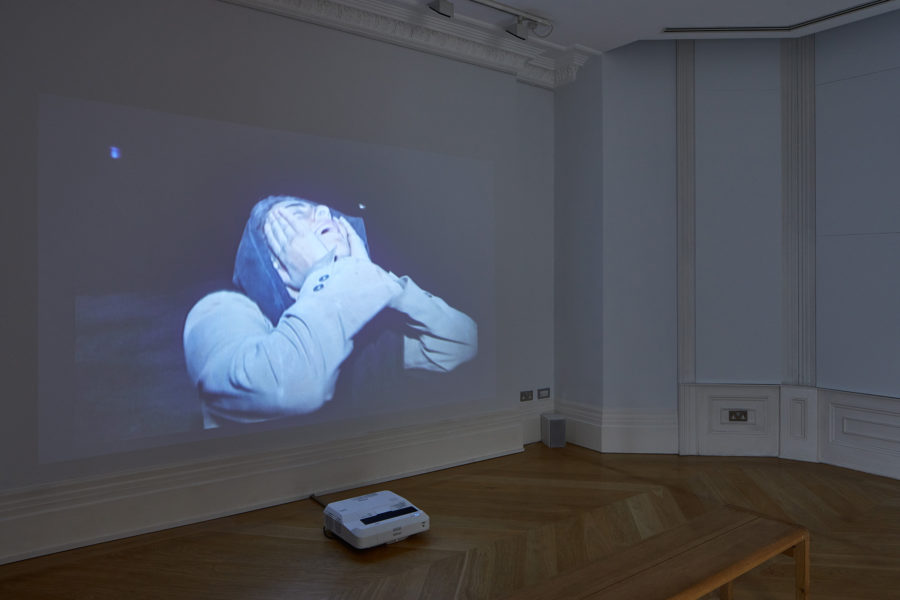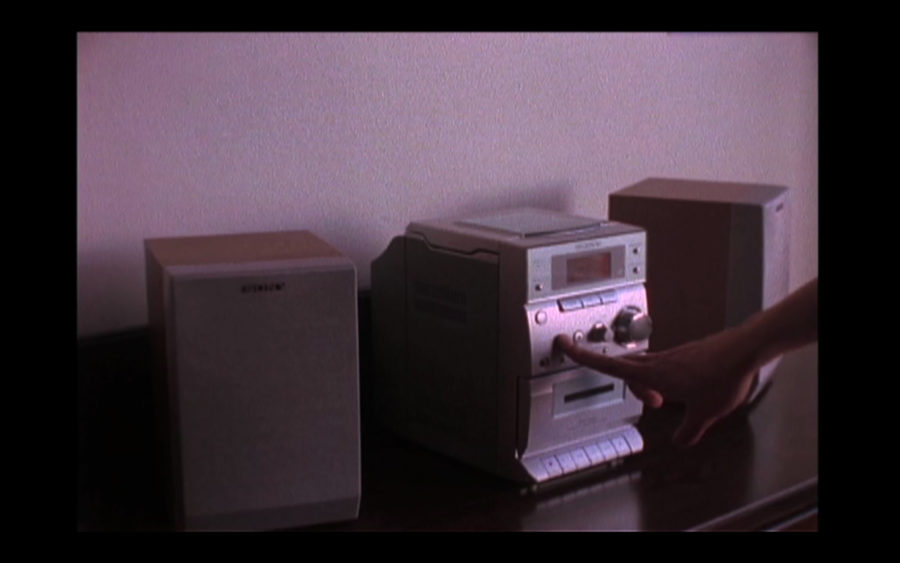Basma al-Sharif

















HD video colour and sound, 13 min 10 sec, Edition of 5 + 1 AP
[+]HD video colour and sound, 13 min 10 sec, Edition of 5 + 1 AP
[-]HD video colour and sound, 20 min 31 sec Arabic, Armenian, and German with English Subtitles, Edition of 5 + 1 AP
[+]HD video colour and sound, 20 min 31 sec Arabic, Armenian, and German with English Subtitles, Edition of 5 + 1 AP
[-]Diptych pigment print on Hahnemühle Photo Rag,1mm Alu lamination, framed, 16,5 x 38,5 x 3,5 cm, Edition of 5 + 1 AP
[+]Diptych pigment print on Hahnemühle Photo Rag,1mm Alu lamination, framed, 16,5 x 38,5 x 3,5 cm, Edition of 5 + 1 AP
[-]Diptych, pigment prints on Hahnemühle Photo Rag,1mm Alu, lamination, framed, 26,5 x 19 x 3,5 cm each, Edition of 5 + 1 AP
[+]Diptych, pigment prints on Hahnemühle Photo Rag,1mm Alu, lamination, framed, 26,5 x 19 x 3,5 cm each, Edition of 5 + 1 AP
[-]Diptych pigment print on Hahnemühle Photo Rag,1mm Alu lamination, framed, 24,5 x 37 x 4 cm, edition of 5 + 1 AP
[+]Diptych pigment print on Hahnemühle Photo Rag,1mm Alu lamination, framed, 24,5 x 37 x 4 cm, edition of 5 + 1 AP
[-]Diptych, pigment prints on Hahnemühle Photo Rag,1mm Alu, lamination, framed, 28,5 x 38,5 x 3,5 cm each, edition of 5 + 1 AP
[+]Diptych, pigment prints on Hahnemühle Photo Rag,1mm Alu, lamination, framed, 28,5 x 38,5 x 3,5 cm each, edition of 5 + 1 AP
[-]Diptych, pigment prints on Hahnemühle Photo Rag, 1mm Alu, lamination, framed, 36,2 x 27,2 x 3,5 cm each, edition of 5 + 1 AP
[+]Diptych, pigment prints on Hahnemühle Photo Rag, 1mm Alu, lamination, framed, 36,2 x 27,2 x 3,5 cm each, edition of 5 + 1 AP
[-]Prints on Hahnemühle Photo Rag, framed
27,6 x 40,8 x 4 cm
Edition of 3 + 1 AP
Prints on Hahnemühle Photo Rag, framed
27,6 x 40,8 x 4 cm
Edition of 3 + 1 AP
Print on Hahnemühle Photo Rag, framed
10,8 x 15,8 x 4 cm (each)
Edition of 3 + 1 AP
Print on Hahnemühle Photo Rag, framed
10,8 x 15,8 x 4 cm (each)
Edition of 3 + 1 AP
Exhibition view: Museum of Contemporary Art, Toronto, 2019. Photo © Tom Arban Photography Inc.
[+]Exhibition view: Museum of Contemporary Art, Toronto, 2019. Photo © Tom Arban Photography Inc.
[-]SD video, colour, sound; 9:45 min
Edition of 5 + 1 AP
SD video, colour, sound; 9:45 min
Edition of 5 + 1 AP
Video installation ; 2 min 30 sec (in loop)
Produced by Manifesta 8: Region of Murcia
Video installation ; 2 min 30 sec (in loop)
Produced by Manifesta 8: Region of Murcia
Exhibition view: The Gap Between Us. Solo exhibition at The Mosaic Rooms, 2018. Photo © Andy Stagg, image courtesy of The Mosaic Rooms
[+]Exhibition view: The Gap Between Us. Solo exhibition at The Mosaic Rooms, 2018. Photo © Andy Stagg, image courtesy of The Mosaic Rooms
[-]
HD video colour and sound, 13 min 10 sec, Edition of 5 + 1 AP
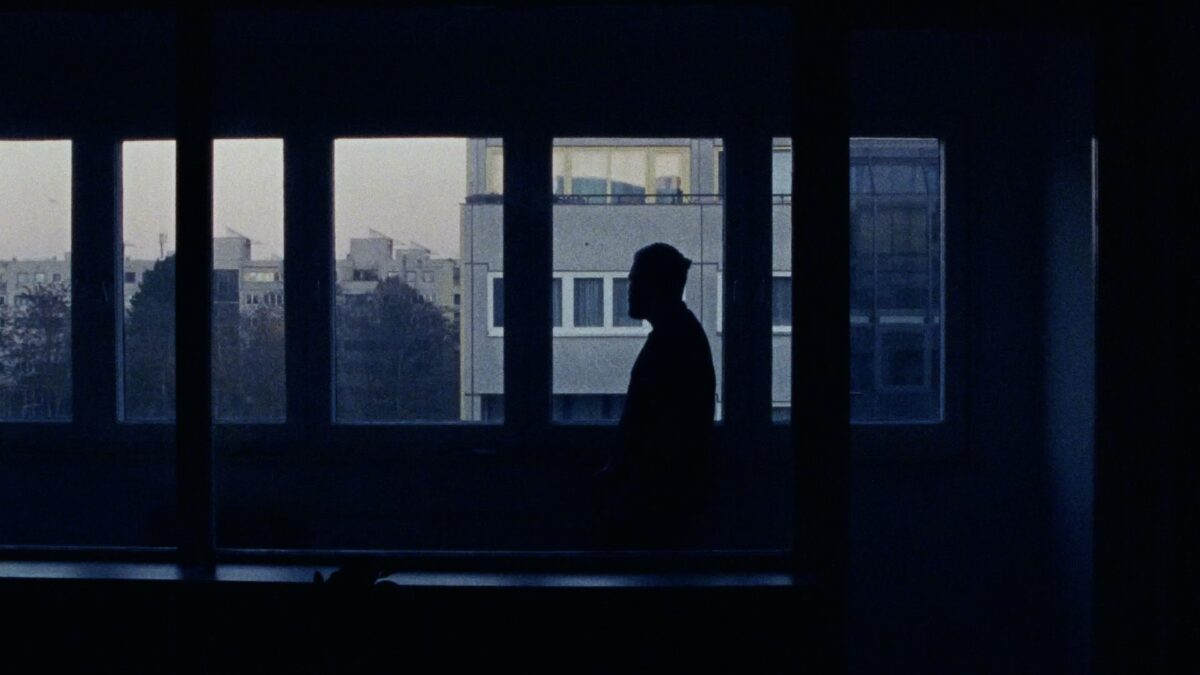
HD video colour and sound, 20 min 31 sec Arabic, Armenian, and German with English Subtitles, Edition of 5 + 1 AP

Diptych pigment print on Hahnemühle Photo Rag,1mm Alu lamination, framed, 16,5 x 38,5 x 3,5 cm, Edition of 5 + 1 AP

Diptych, pigment prints on Hahnemühle Photo Rag,1mm Alu, lamination, framed, 26,5 x 19 x 3,5 cm each, Edition of 5 + 1 AP

Diptych pigment print on Hahnemühle Photo Rag,1mm Alu lamination, framed, 24,5 x 37 x 4 cm, edition of 5 + 1 AP

Diptych, pigment prints on Hahnemühle Photo Rag,1mm Alu, lamination, framed, 28,5 x 38,5 x 3,5 cm each, edition of 5 + 1 AP

Diptych, pigment prints on Hahnemühle Photo Rag, 1mm Alu, lamination, framed, 36,2 x 27,2 x 3,5 cm each, edition of 5 + 1 AP

Prints on Hahnemühle Photo Rag, framed
27,6 x 40,8 x 4 cm
Edition of 3 + 1 AP

Print on Hahnemühle Photo Rag, framed
10,8 x 15,8 x 4 cm (each)
Edition of 3 + 1 AP
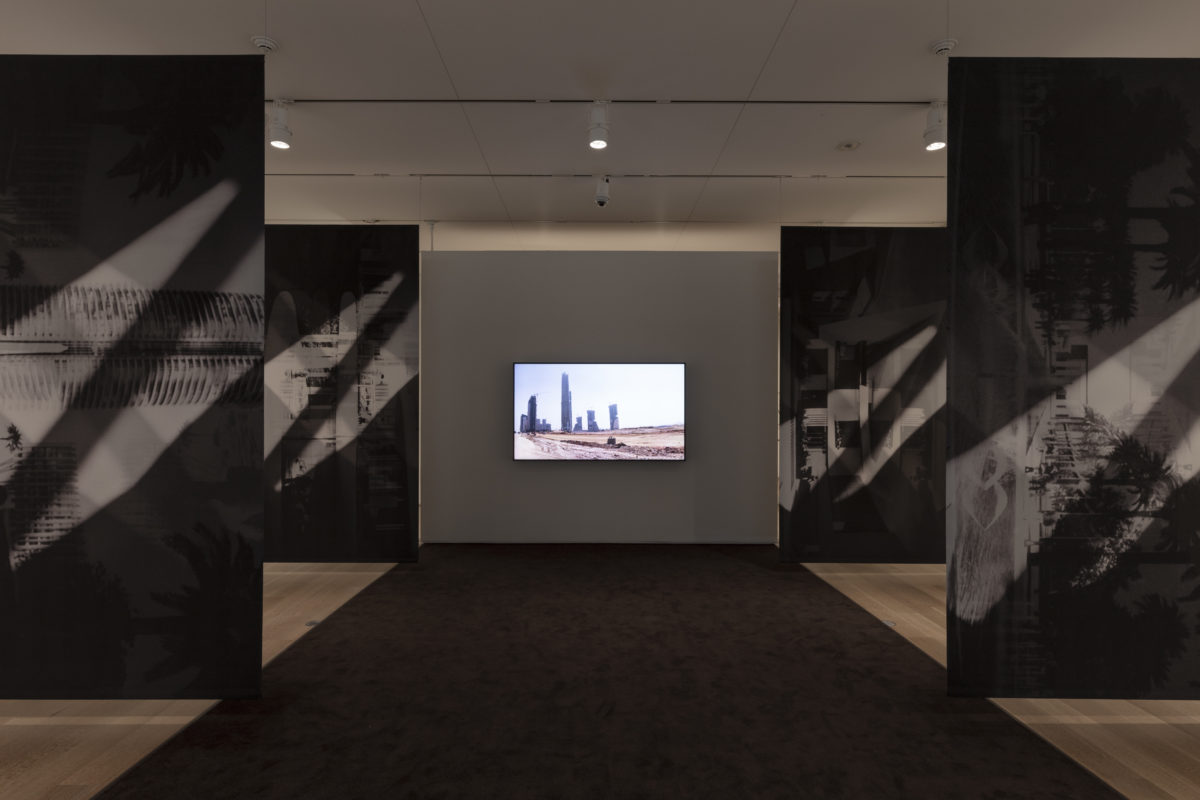
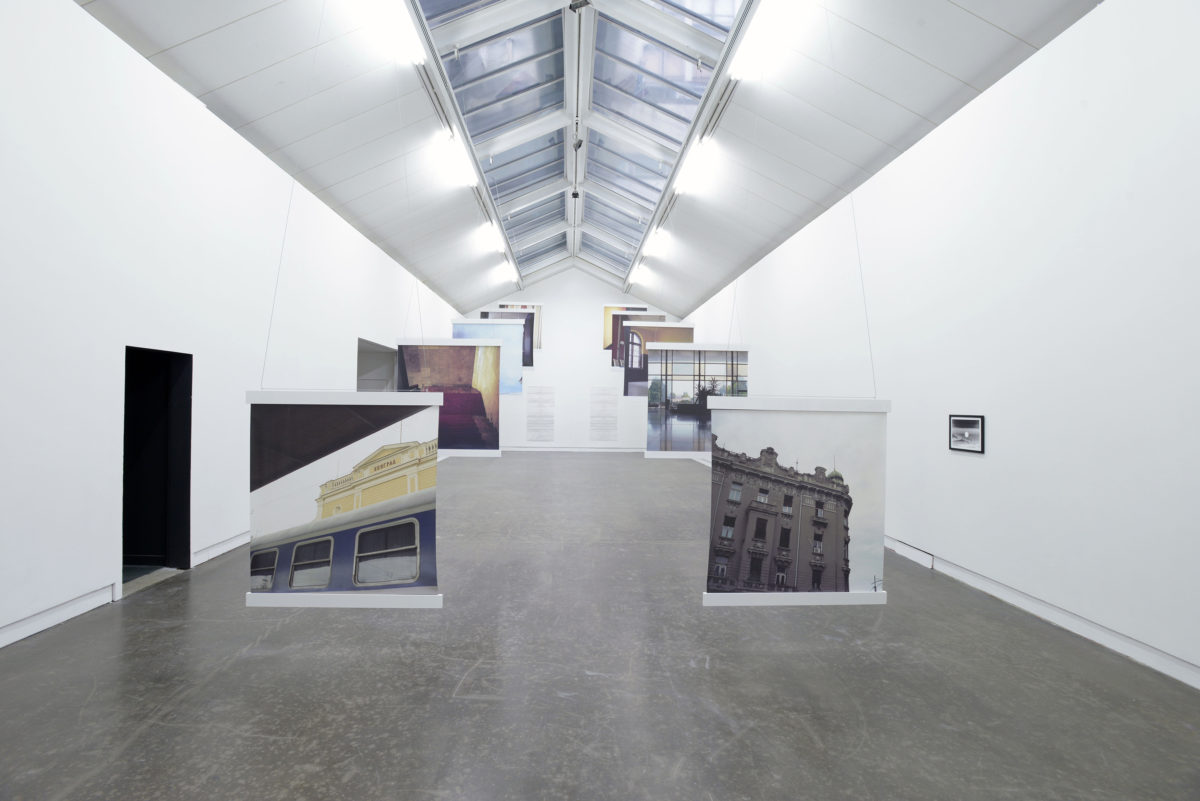
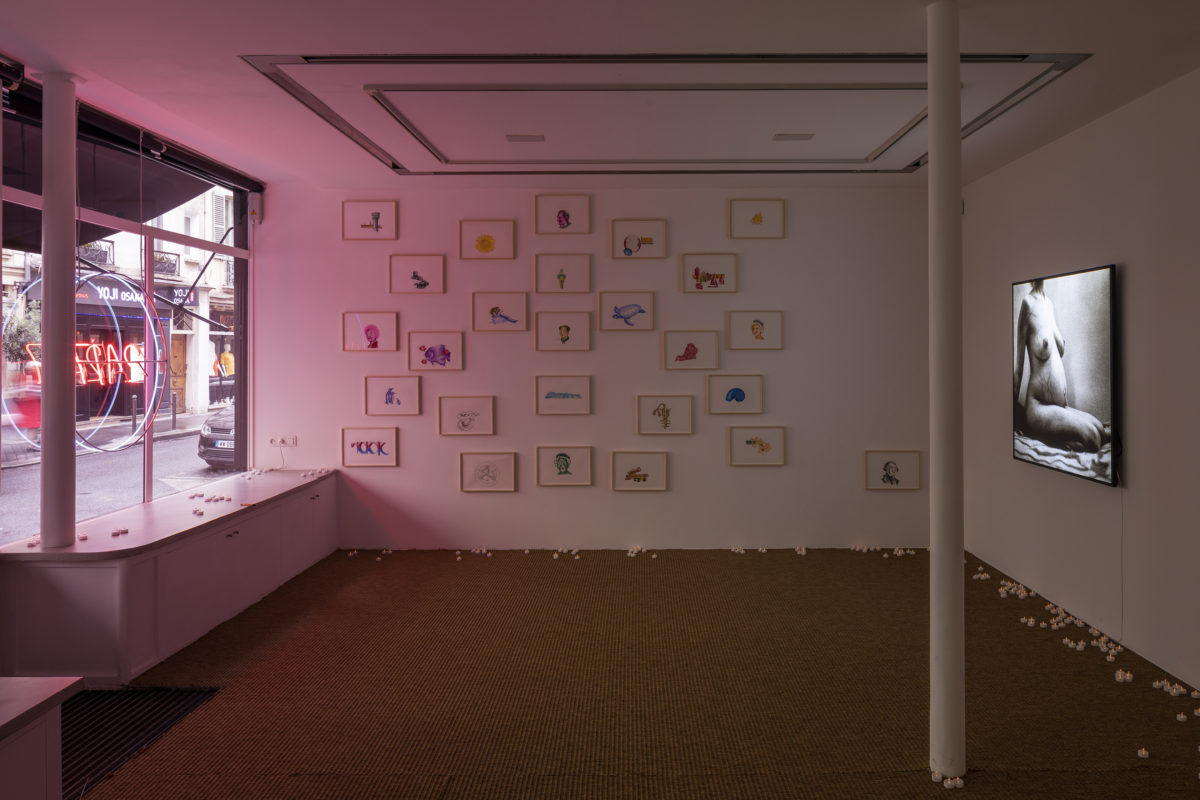
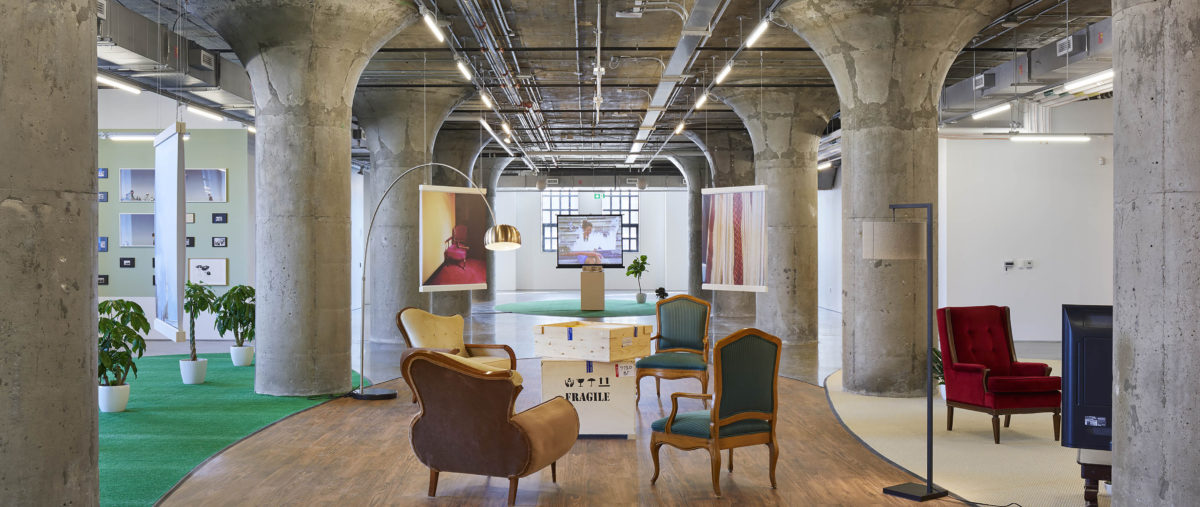
Exhibition view: Museum of Contemporary Art, Toronto, 2019. Photo © Tom Arban Photography Inc.

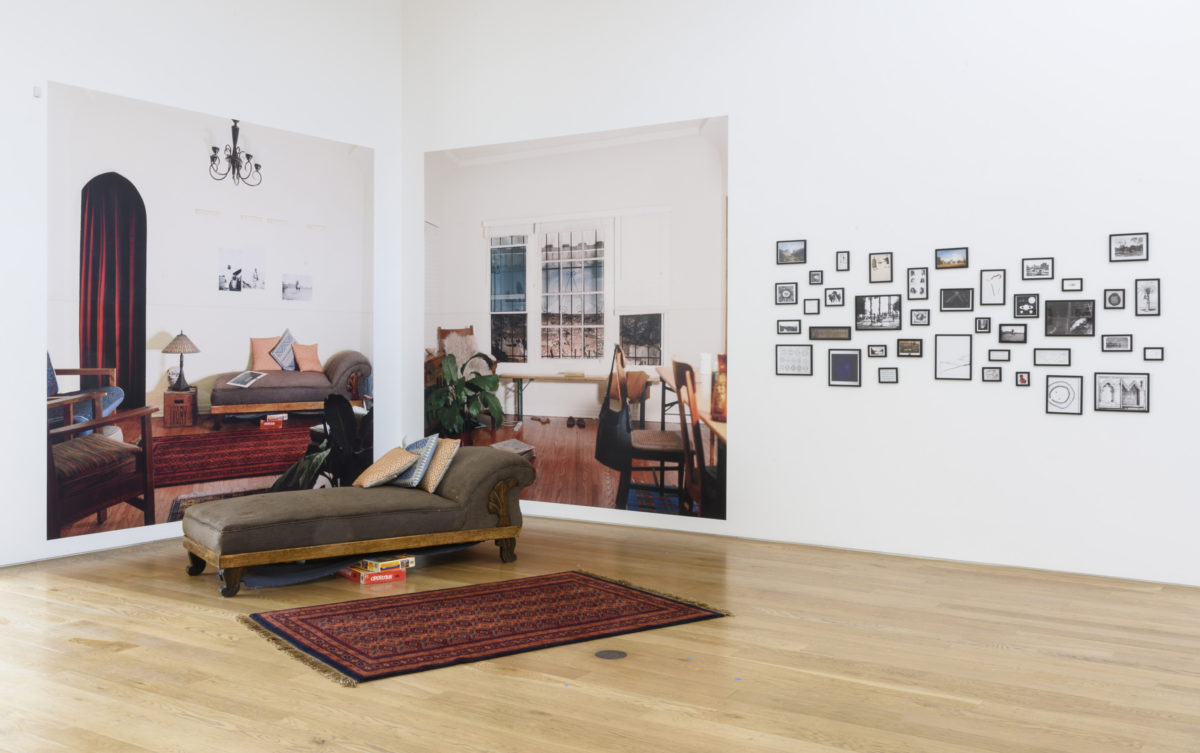
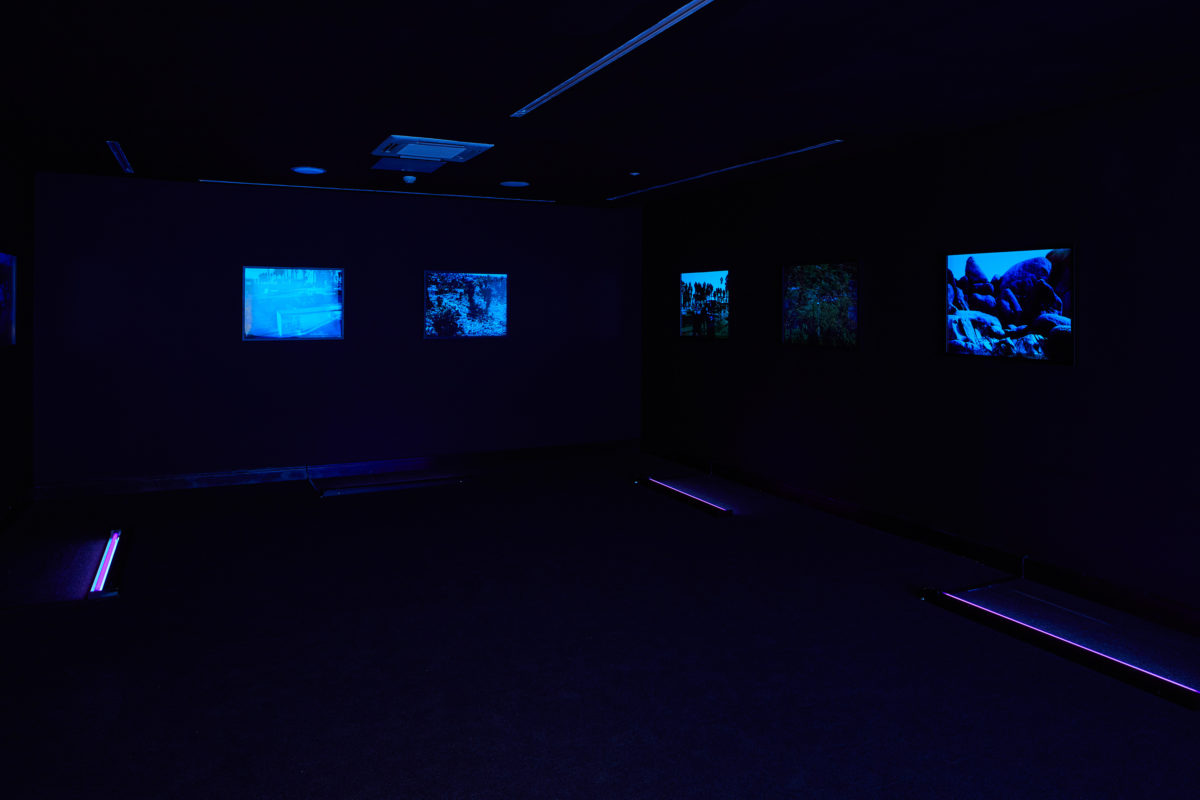
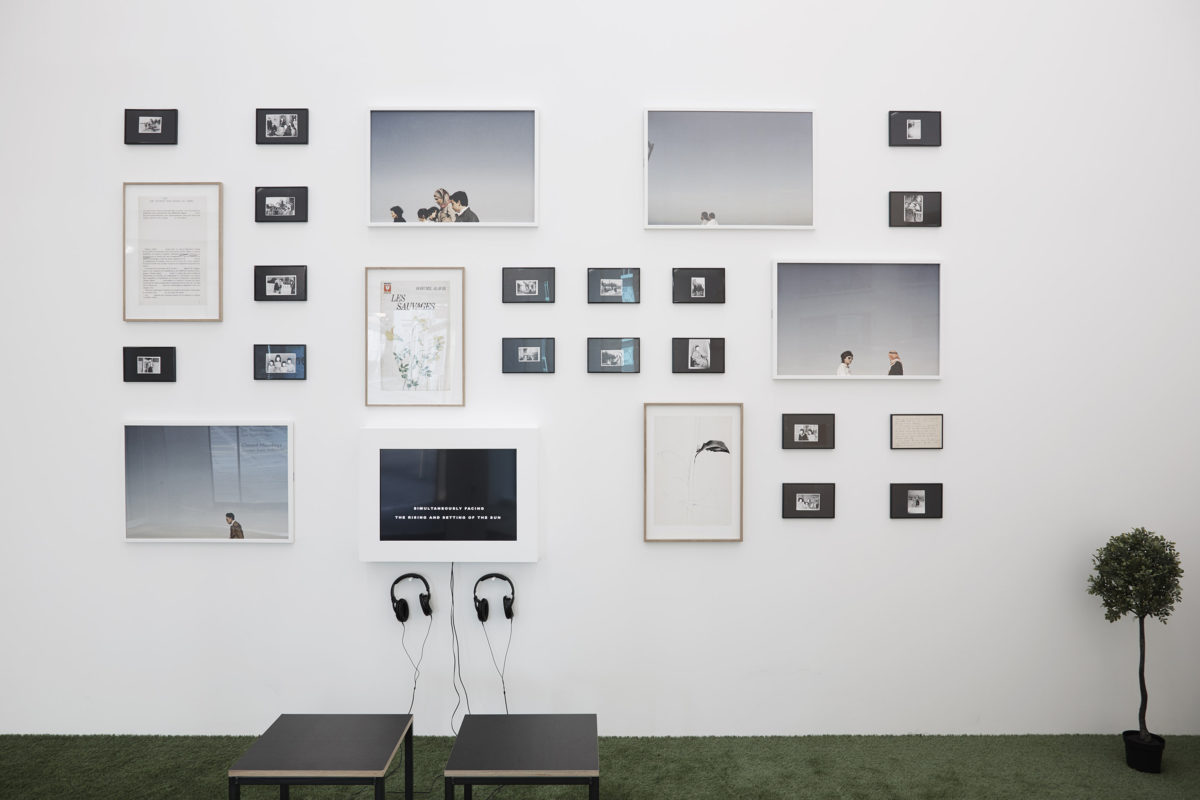
SD video, colour, sound; 9:45 min
Edition of 5 + 1 AP
Video installation ; 2 min 30 sec (in loop)
Produced by Manifesta 8: Region of Murcia
Exhibition view: The Gap Between Us. Solo exhibition at The Mosaic Rooms, 2018. Photo © Andy Stagg, image courtesy of The Mosaic Rooms
Capital, 2022
Two-channel video, sound, loop, and banners (inkjet prints on canvas)
Duration: 19 min. 03 sec.
Edition of 2 + 1 AP
Commissionned by the Ruttenberg Contemporary Photography Series for the museum of the Art Institute of Chicago.
Capital, installation views © Image courtesy of The Art Institute of Chicago
Capital, video stills © Basma al-Sharif
Al-Sharif’s newest work, Capital—comprising a two-channel video and a series of banners depicting architectural renderings of proposed urban spaces—references Italian White Telephone (Telefoni Bianchi) films of the 1930s and ’40s. Named for what was then a scarce status symbol, white telephone films upheld and promoted conservative and nationalistic notions of home, family, and religion. They were later understood as precursors to fascist propaganda films. Often set in foreign or even imaginary countries, the films featured Italian characters in lighthearted, escapist narratives and offered Hollywood-style glamour untouched by class or social conflict—a far cry from daily life in wartime Italy.
Capital was shot at various locations including the CityLife residential complex in Milan, the Nile riverfront in Cairo, residential neighborhoods in Alexandria, and construction sites of new cities—places where architectural histories are romanticized even as they are being erased. Through these sites, al-Sharif explores the desires that drive politicians, urban planners, and their imagined ideal residents as well as how the resulting designs, with their disregard for the historical failures of colonial architecture, seek to transform and control the cultural and political landscape. Together the film and installation hint at the limits of free speech and reveal how the legacies of fascism live on in the present.
A Philistine, 2019
Installation comprises a Novella, seating, textile, table, cabinet with 47 books, framed inkjet prints from digital archive, photographic banners, novella excerpts in Vernacular Arabic and English on tracing paper, and recording of A Philistine excerpts in Arabic.
Variable dimensions
Unique
Installation views: Basma Alsharif at CCA Glasgow, 2019. Photo © Alan Dimmick
A Philistine is a new novella written by the artist, which reveals the story of a central character (nicknamed Loza) on a train journey moving backwards in time through history. The book begins in present day Lebanon, travelling through 1935 Palestine and ending in New Kingdom Egypt (16th-11th century B.C.E). Reinventing historical train routes that coincide with the Haifa-Beirut-Tripoli line and Palestine Railways, the story tries to suggest what such a journey would be like today, and invites new readings of the history of the region. Moving beyond exhausted ideas of borders and geographies, the book’s story incites new possibilites for Palestinian futures and desires.
Hinting at the multiple meanings and geographical etymology of the word ‘Philistine’, the book weaves together travelogues and science fiction narratives in its first two chapters, as the ‘Philistine’ encounters mythical creatures and rituals, before climaxing in erotic writing with lush and vivid descriptions that pull her through a series of different rooms, moral questions and confusions. Borders are undone and the various inhabitants of Greater Syria and North Africa intertwine along a train journey that escapes the imminent future and asks questions of the past and present.
Across the two larger galleries, A Philistine is expanded into the space as a plush mise-en-scène reading room inviting the viewer to become part of the work. As the book deals with questions of time, rhythm, imagination and slowness, Basma invites the viewer to read the book in the space. It can not be removed from the gallery or consumed as an object as such – instead it should be enjoyed in situ, with other works and other people. The book is presented in Vernacular Arabic and English, exploring the nuances of translation, and connections and tensions between and within both languages. An accompanying sound work plays wherein a voice reads excerpts from the book in Arabic, alongside a series of monochrome negative prints and banners.
24/7, 2019
– Neon sign ’24/7’;
– 26 drawings representing currencies of imperial countries and former colonies, pastel on paper, 30,5 x 43 x 3 cm (each) and drawings and collages on Papyrus, 97 x 203,5 x 5 cm;
– 6 photographs, 29 x 39 x 2,5 cm (each);
– lightbox and Duratrans print, 117 x 117 x 2 cm;
Unique (each)
Exhibition views: 24/7, Galerie Imane Farès, Paris, 2019. Photo © Tadzio
A 24/7 neon sign flashes relentlessly on the gallery’s vitrine. Reminiscent of Benjamin Franklin’s infamous maxim (“time is money”) that came to exemplify the spirit of capitalism, it signals a commercial space that is permanently open, accessible at all times. Such is the threshold that welcomes the visitor into Basma Alsharif’s second solo-exhibition at Galerie Imane Farès.
A fragment of the complex and polysemic project titled 24/7, this sign alludes at once to the normalization of labour time and the increasing pervasiveness of consumerism in both public and private spheres. The neon appears to be emblematic of the uncanny world that the artist has forged : a world in which the banknotes of imperial countries and former colonies are juxtaposed with a photograph showing the veined body of a pregnant woman. A “nonplace” that telescopes entertainement, consumerism, labour, colonialism, the male gaze and maternity and signifies a whole other form of exploited labour.
Through drawings, photographs and light installations, the artist looks at the visual culture of neo-colonialism, which has come to dominate today’s globalized world. Each piece calls on the viewer to reflect on the means through which these “isms” have extended their control on us, seeping into even the most confined regions of our private lives.
Announcing a new phase in Alsharif’s practice, this overwhelming, almost totalitary macrocosm is, however, not disconnected from her previous works. While the artist’s earlier projects tackled the semiotics of representation, 24/7 subtly reveals how representations can insidously transform the eye, the mind and the body into submissive entities.
— Line Ajan, 2019
A Philistine, 2019-2020
Installation comprises a salon made of seating, textile, table; a cabinet with 47 artists books (the novella); an ensemble of framed inkjet prints from digital archive; 10 photographic banners; novella excerpts in Vernacular Arabic and English on tracing paper; a recording of A Philistine excerpts in Arabic. A Mophradat’s Consortium Commission.
Trompe l’œil, 2016
Installation comprises a HD video, solor, sound, 8 min; 38 inkjet photographs of different sizes; 2 inkjet mural photographs, 295 x 295 cm each; props
Girls Only, 2014
Installation comprises a 16mm film, 2 min 24 sec, 5 inkjet prints and india ink, 49 x 52 cm (each)
The story of milk and honey, 2011
Installation comprises one SD video, color, sound, 9 min 45 sec; 10 photographs titled Corniche Beirut, 50 x 73 cm (each); 49 photographs titled Original Family Archives, 16 x 23 cm (each); 6 photographs titled Les Sauvages, 59 x 42 cm (each)
Exhibitions views: Basma Alsharif at the Museum of Contemporary Art, Toronto, 2019. Photo © Tom Arban Photography Inc.
Basma Alsharif’s exhibition at MOCA intertwines four major works, each one presented as a staged setting. Using many different media, she takes us on journeys into the collective subconscious, exploring the tools we all use to understand the ghosts of history.
At the centre of the exhibition is a new work, A Philistine, 2018, that invites visitors to settle into an armchair and enter a story that moves backwards in time. The core element is a novella—a story, broken into three genres: History, Fantasy, and Erotica. Beginning in a present-day Lebanon, the narrative travels through 1935 Palestine, and ends in New Kingdom Egypt (16th-11th century B.C.E). Alsharif stages each of her works in a familiar, domestic setting, often including plants and furniture. These intimate scenarios, invite us to spend time with the more nuanced content that is the focus of the work — in literature, images, and video. By editing together both sourced and created materials, Alsharif exposes those times in history that seem irrational, and impossible to tell from one point of view.
A Land Without a People (1) – (10), 2018
Inkjet prints from 120mm color negative scans on paper
60,5 x 60,5 cm (each)
Unique
Views: Art Dubai, 2018
The slogan “A land without a people for a people without a land” is where this photographic series takes its title. Set in Death Valley National Park, which occupies part of the Mojave Desert and was previously inhabited by a number of Native American cultures over the course of the last 10,000 years, depicts landscapes that play on the idea that a land is never actually empty – even if we don’t see it’s inhabitants.
The slogan, used in Zionist Propaganda, was meant to suggest that historical Palestine was a viable place for the Jewish homeland as it’s inhabitants were a stateless nomadic population – much like the Native Americans – who eventually lost their sovereignty on the land they had dwelled in for centuries. The series depicts such supposedly empty lands, highlighting breathtaking desert views as it moves towards Los Angeles and shows us the Hollywood sign – another hint at a colonizing force in the modern day city: the industry that brought us racist depictions of Native Americans played by white actors that would help recreate the narrative of how the United States came to be the nation it is today and questioning who has the right to settle where, and on what premise.
Ouroboros, 2017
Feature film, HD video / 16mm film, color, sound
77 min
Exhibition views: 24/7, Galerie Imane Farès, Paris, 2019. Photo © Tadzio
Ouroboros is a feature length experimental film shot across five locations. The ouroboros is the ancient Egyptian symbol of the snake eating its own tail, a reference to the cycle of destruction and renewal. The film’s allegorical story explores this constant process of ending and beginning. It opens with waves breaking off the coast of Gaza and follows a young man through geographically distanced landscapes, as he searches for escape from the emotional pain of heartbreak. Alsharif takes a sensory approach to her material, at times reversing film, moving between muffled silences, dialogue and intense melodic sound. We see Gaza at a distance, the images filmed from above by drones, and interior spaces by steady cam, the viewer is positioned in a kind of surveillance role. Unable to visit the blockaded territory at the time, Alsharif worked with Media Town in Gaza, a documentary film production and Media Services Provider to remotely direct these scenes with the collaboration of her Palestinian producer Mohanad Yaqubi of Idioms Film. The film builds towards a sort of reunion, one that Alsharif has described as only possible through a kind of forgetting and letting go.
Trompe l’œil, 2016
Installation comprises: a HD video, colour, sound, 8 min; 38 inkjet photographs of different sizes; 2 inkjet mural photographs, 295 x 295 cm (each) and props
Unique
Exhibitions views: Samuel Freeman Gallery/Iris Project, Los Angeles, 2017
Exhibitions views: Meeting Points 8: Both Sides of the Curtain, presented by Mophradat at the Beirut Art Center, 2017. Photo © Mahmoud Merjan
Exhibitions views: Grande Halle, Discovery Award, Rencontres d’Arles 2016. Photo © Anne Foures
Basma Alsharif’s work slips between the fault lines of history to reveal moments, places, and real or fictitious events. Constantly navigating between past and present, she sets out to reconstruct moments from life, to tell stories, imbued or not with real and imaginary memories. A visual writing, with hybrid forms and combinations, emanates from this interplay of incursions between individual and collective memory. The artist plays with the manipulation of images, the use of different techniques, and montage and sound collage so as to create visually strange collisions.
— Mouna Mekouar
My work is deeply engaged with the human condition in relation to nationalism.
Employing photography, film, video, sound, and text, my interest is in the gaps and slippages that occur through representation and the violence, apathy and pleasure that it produces. I engage with politics on a visceral level through pieces characterised by their immersive, lyrical qualities, creating familiar environments that lure us into unsettling experiences. Domesticity, history, and intimacy are referenced in a work focused on the experience of violent history tempered by representation. Trompe l’Œil is an installation that takes over the space of the exhibition to re-establish it as a room in which all the elements that comprise the mise-en-scene are careful disruptions of a scene. Housing the ghosts of an ugly history that finds itself in the present, the work explores the essential function of photography today as archive, as history, and as a representation of the present and a vision for the future.
— Basma Alsharif
A Field Guide To The Ferns, 2015
HD Transfer from 16mm film
9 min 44 sec
Edition of 5 + 1 AP
“Primitive savagery meets the brutality of the modern world in Ruggero Deodato’s timeless slice of visceral horror”. Cannibal Holocaust is revived deep in the New Hampshire woods where apathy and violence are blurred.
A Field Guide to the Ferns is the result of a residency at the MacDowell Colony in the summer of 2014. The same year that the worst of Israel’s three major attacks on Gaza took place. Living in the middle of the woods, with only images to connect me to the horrors that were taking place in Gaza, I started contemplating the effect of the mediated image of war. What is the difference between the war image we see on our screens versus the crude violence of a horror film. And what is the real value of watching either. These are questions posed in Ruggero Deodato’s Cannibal Holocaust and they continue to persist in our ever more globalized and virtually connected world.
High Noon (1) – (8), 2015
Series of 8 photographs, inkjet prints from 16 mm film stills
63 x 82,5 x 4 cm (each)
Edition of 3 + 1 AP (each)
Exhibition views: The Gap Between Us, The Mosaic Rooms, 2018. Photo © Andy Stagg, image courtesy The Mosaic Rooms
Every place on Earth is measured in terms of its distance to two imaginary lines.
The site at which longitude (vertical line) meets latitude (horizontal line) were fixed in Greenwich, England to be the Prime Meridian in 1884, at a time when the UK was a major colonial power, with the Northern and Southern Hemisphere divided by the imaginary line that is the equator, a line equidistant from the North and South Pole. Prior to this, there was no standardized time, no way to tell when the day started, or ended, or even how long that day was. Each place had it’s own system, it’s own Prime Meridian.
The photographic series High Noon takes that knowledge and launches us into a future beyond the Prime Meridian in which there is no North or South, no East or West. It takes us into a space where we cross time and space and can imagine being everywhere all at once. The images trap in their compositions a hallucinogenic portrait of two places in the same ephemeral moment: The West Coast of Southern California and South Eastern Japan.
Based on the idea that sometimes we are in fact standing on the earth « Upside Down » and my own personal background as a Palestinian – a people oppressed, exiled, forced into migration, or nomadism and explores it through the basic human condition of being lost in the world when we feel we are from Nowhere. High noon takes us on a journey through time and space through film stills that catch a hallucinogenic glimpse of what a post-apocalyptic paradise. One of a roll of Black and White shot in Southern California, the other a roll of color film shot in Onomichi Japan, both 16mm film.
Taking it’s title from the American film genre of the Western, High Noon is the term used to described the meeting point between good and evil (in relation to the film genre, it refers to a showdown between cowboys and indians) to resolve a conflict. In this photographic series, it is an invitation to move beyond a dual and into the future.
High Noon (1)
High Noon (2)
High Noon (3)
High Noon (4)
High Noon (5)
High Noon (6)
High Noon (7)
High Noon (8)
High Noon, 2014
16mm film transferred to video, colour, sound
31 min 48 sec
Edition of 5 + 1 AP
Exhibition views: The Gap Between Us. Solo exhibition at The Mosaic Rooms, 2018. Photo © Andy Stagg, image courtesy of The Mosaic Rooms
Produced with the support of Pavillon Neuflize OBC, Palais de Tokyo, Paris, France and The Onomichi City Museum of Art
High Noon, a film accompanied by eight photographic stills, embodies the dissonance of experiencing multiple times and places at once. Colour saturated images of two locations, in Japan and in California, are merged together. Both places lie on the Greenwich meridian, the 19th century system of Greenwich meantime which established an international standard to measure time. Alsharif seeks to escape these constrictions, as the camera cuts across time zones in a hypnotic drift, accompanied by a low fi electro soundtrack.
Renee’s Room, 2014 – 2015
Video installation, color, sound
13 min
Edition of 5 + 1 AP
This life as you now live it and have lived it, you will have to live once more and innumerable times more; and there will be nothing new in it, but every pain and every joy and every thought and sigh and everything unutterably small or great in your life will have to return to you, all in the same succession and sequence – even this spider and this moonlight between the trees, and even this moment and I myself. The eternal hourglass of existence is turned upside down again and again, and you with it, speck of dust!
Frederick Nietzsche’s The Gay Science: the Greatest Weight, Book IV, page 273, translation by Walter Kaufmann
Basma Alsharif invites you to a room created for a fictive character, Renée.
A dark room. A white carpet. One tape player. Two monitors : the first one reflects your presence; the other reflects Renee’s world. All the elements create ephemeral intersections that function as a loop where the room breathes in the absence of its lodger. Alternating between darkness and light, from silence to sound, renewal and repetition are enacted.
“This installation is an invitation inside of Renee’s room. The only request she has is for you to remove your shoes before entering”, Basma Alsharif.
Girls Only, 2014
Installation comprises a HD video transferred from a super 8mm film, 2 min 28 sec, 5 inkjet prints of various sizes from color negatives with applied India ink, and accompanying mise-en-scène
Unique
Girls Only plays out as a rhyming game set in the Panathenaic Stadium in Athens. Set to the mechanics of lights, camera, and action that compound the relationship between the subject on screen and the one behind the camera leaving us to wonder if there is no rhyme or reason for why something happens, then maybe is there no obvious explanation for it.
Deep Sleep, 2014
HD Video transferred from Super 8mm film, color, sound
12 min 37 sec
Edition of 5 + 1 AP
Production: Manifesta 8 Region of Murcia
A hypnosis-inducing pan-geographic shuttle built on brainwave generating binaural beats, Deep Sleep takes us on a journey through the sound waves of Gaza to travel between different sights of modern ruin. From the ruins of an ancient civilization embedded in a modern civilization in ruins (Athens), to the derelict buildings of anonymous sites (Malta) and a site that is post-civilization (the Gaza Strip). Shot while under self-hypnosis, the performance-film asks us to move from the corporeal self to the cinema space in a collective act of bilocation that transcends the limits of geographical borders, time and space.
Untilted (Lindsay Bloom), 2014
HD video transfer of 16mm film
11 min 32 sec
Edition of 5 + 1 AP
A 3 minute camera edit blends the slow motion image of a woman walking into a river over the course of an hour.
Filmed at the Film Farm, Mount Forest ON Canada
O, Persecuted, 2014
16mm film transferred to HD video, sound
11 min 38 sec
Edition of 5 + 1 AP
“In O’ Persecuted, Alsharif offers an occluded view of the restoration of Kassem Hawal’s 1974 work of Popular Front for the Liberation of Palestine agitprop, Our Small Houses, before launching into a rapid-fire montage of decadent Israeli party photos, set to a pounding
gabba soundtrack. Despairing at the contrast between the certainties of the past and those of present, Alsharif suggests an effort to shatter the former through the recapitulation of the latter.”
— Colin Beckett, The Brooklyn Rail
Home Movies Gaza, 2013
HD Video, color, sound
24 min 10 sec
Edition of 5 + 1 AP
Home Movies Gaza introduces us to the Gaza Strip as a microcosm for the failure of civilization. In an attempt to describe the everyday of a place that struggles for the most basic of human rights, this video claims a perspective from within the domestic spaces of a territory that is complicated, derelict, and altogether impossible to separate from its political identity.
Farther than the eye can see, 2012
Single Channel HD Video – 13 min
Unique
full video preview available by request
In a story whose ending is unknown, the tracing of how events unfold is a journey backwards towards a place that no longer exists. Farther Than the Eye Can See uses the landscape of the Emirates as an indistinct urban space that appears new, uninhabited, and with a vague promise of something better. It also forms the backdrop for the voice of a woman recounting her story of the Nakbah (the mass exodus of Palestinians from Jerusalem in 1948) beginning with the arrival and ending with the departure. What lies ahead is beyond the range of vision as what came before is becoming a faded memory.
The Story of Milk and Honey, 2011
Installation comprises one SD video, color and sound, 9 min 45; 10 photographs titled Corniche Beirut, 50 x 73 cm (each); 49 photographs titled Original Family Archives, 16 x 23 cm (each), 6 photographs titled Les Sauvages, 59 x 42 cm (each)
Edition of 5 + 1 (video)
Unique (installation)
Exhibition views: From Ear to Ear to Eye, Nottingham Contemporary, 2017. Photo © Stuart Whipps
Exhibition views: Doppelgänging, Galerie Imane Farès, 2014
Produced with the support of the Fundación Marcelino Botín Visual Arts Award, 2011.
For the installation The Story of Milk and Honey, Basma Alsharif initially wanted to write a love story about the Levant, as though it were a classical Arabic song. However, she found herself conflicted by questions of nationalism and orientalism. This work is installed within an environment that is deliberately synthetic; artificially exoticised, the floor is covered with AstroTurf and dotted with pot plants. Alsharif’s video Milk and Honey tells two stories: one of lost love; the other of the making of the video itself, and its ultimate failure. It tells of collecting materials in Beirut with the ambition of creating a “fictional love story set in the Middle East devoid of political context.” Surrounding this are groups of photographs taken surreptitiously of pedestrians walking along the Corniche, the seaside promenade in Beirut.
The Story of Milk and Honey, 2011
Installation comprises one SD video, color and sound, 9 min 45; 10 photographs titled Corniche Beirut, 50 x 73 cm (each); 49 photographs titled Original Family Archives, 16 x 23 cm (each), 6 photographs titled Les Sauvages, 59 x 42 cm (each)
Edition of 5 + 1 (video)
Unique (installation)
Exhibition views: From Ear to Ear to Eye, Nottingham Contemporary, 2017. Photo © Stuart Whipps
Exhibition views: Doppelgänging, Galerie Imane Farès, 2014
Produced with the support of the Fundación Marcelino Botín Visual Arts Award, 2011.
For the installation The Story of Milk and Honey, Basma Alsharif initially wanted to write a love story about the Levant, as though it were a classical Arabic song. However, she found herself conflicted by questions of nationalism and orientalism. This work is installed within an environment that is deliberately synthetic; artificially exoticised, the floor is covered with AstroTurf and dotted with pot plants. Alsharif’s video Milk and Honey tells two stories: one of lost love; the other of the making of the video itself, and its ultimate failure. It tells of collecting materials in Beirut with the ambition of creating a “fictional love story set in the Middle East devoid of political context.” Surrounding this are groups of photographs taken surreptitiously of pedestrians walking along the Corniche, the seaside promenade in Beirut.
Turkish Delight, 2010
16mm film transferred to video, sound, color
2 min 46 sec
Edition of 5 + 1 AP
“Footage filmed in the interiors of homes in Amman, Jordan, just after their inhabitants have left, is interwoven frame-by-frame over a looped soundtrack of single words. Shot on super 16mm film and transferred to digital video, installed in a room sealed by mosquito netting with no entrance. The words are my grandmother’s, the homes are my relatives’, and the work was made was just after a major war in the Gaza Strip. Turkish Delight is a thinly veiled response to the migration of Palestinians to Jordan, to political refugees who settle in the neighboring country waiting for the occupation to end – refugees who never end up leaving. Their domestic space is a prison with invisible walls; for the spectator, Turkish Delight provides some semblance of the banality of their exile.”
—Basma Alsharif
We began by measuring distance, 2009
DV Video, colour, sound
19 min 06 sec
Edition of 5 + 1 AP
Exhibition view: The Gap Between Us. Solo exhibition at The Mosaic Rooms, 2018. Photo © Andy Stagg, image courtesy of The Mosaic Rooms
Long still frames, text, language, and sound are weaved together to unfold the narrative of an anony- mous group who fill their time by measuring distance. Innocent measurements transition into po- litical ones, examining how image and sound communicate history. We Began by Measuring Distance explores an ultimate disenchantment with facts when the visual fails to communicate the tragic.
Everywhere was the same, 2007
Single channel SD video, colour, sound,
11 min 38 sec,
Edition of 5 + 1 AP.
In an empty room, a slideshow projection of abandoned places plays alongside the narrative of two girls who find themselves on the shores of a pre-apocalyptic paradise. Told through subtitle text that weaves fact and fiction together, the story of a massacre unfolds. When the image and text malfunctions and the story is no longer comprehensible, the video wanders away from the room of the slideshow, allowing us to see what is happening elsewhere.
